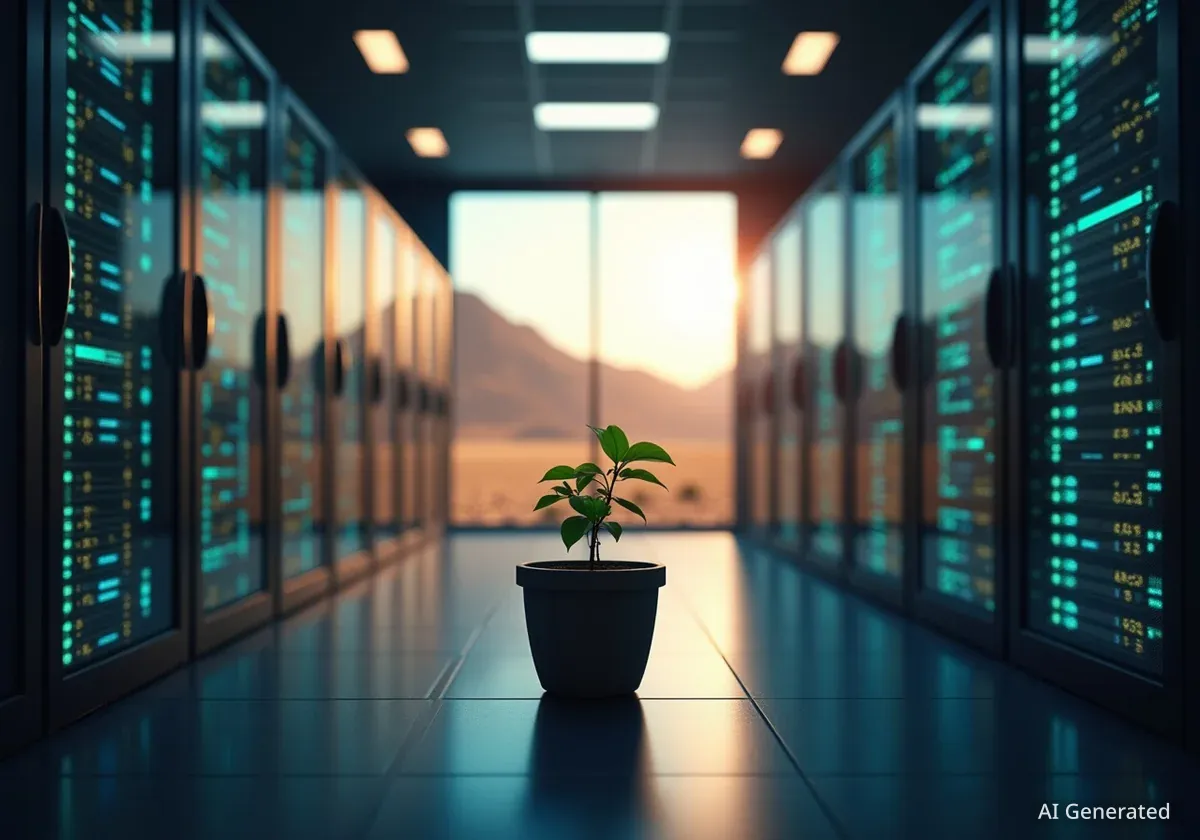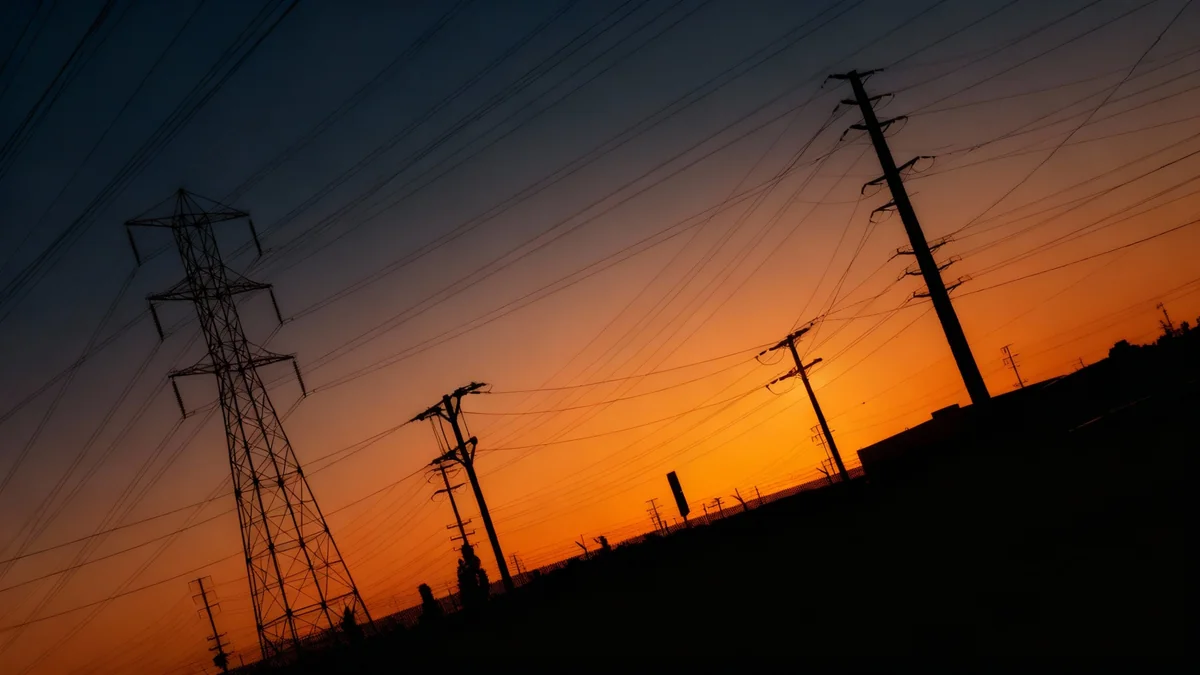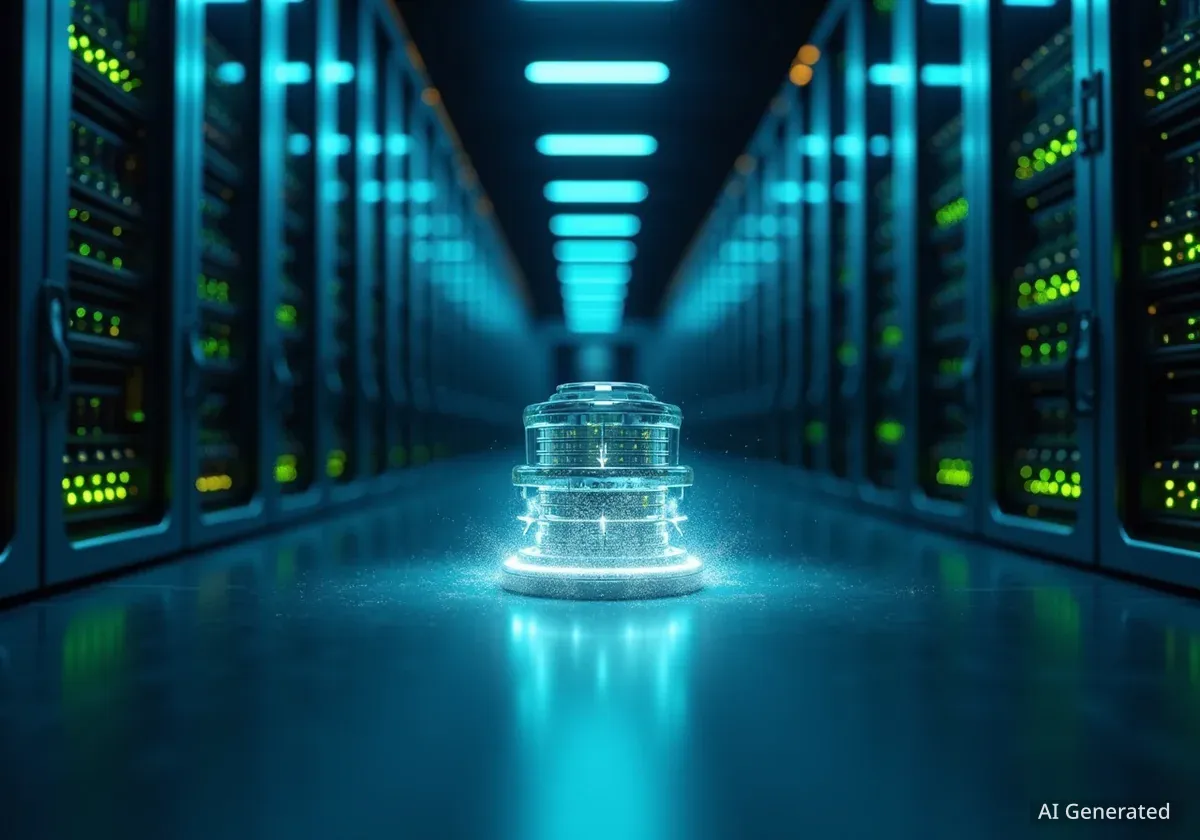The rapid global expansion of data centers to power artificial intelligence is placing significant strain on local power grids and water supplies. Communities from Mexico to Ireland are reporting increased utility shortages as tech giants like Microsoft, Google, and Amazon build massive computing facilities that consume vast amounts of energy and water.
Key Takeaways
- The global construction of AI data centers is causing power and water shortages in numerous countries.
- Nearly 60% of the world's largest data centers are located outside the United States, with hundreds more planned.
- Local communities in countries like Mexico, Ireland, and South Africa are experiencing direct impacts on their daily lives.
- Tech companies often lack transparency about the resource consumption of these facilities.
The Unseen Cost of AI Advancement
The race to develop and deploy advanced artificial intelligence has triggered a worldwide construction boom. Companies including OpenAI, Amazon, Google, and Microsoft are investing hundreds of billions of dollars to build data centers, the physical backbone of AI. These facilities house thousands of powerful computers that require immense electricity to run and large volumes of water for cooling.
While much of the focus has been on developments within the United States, the expansion is a global phenomenon. Tech companies have increasingly looked abroad to build these essential sites, often with less public scrutiny than they might face domestically.
Global Data Center Footprint
According to an analysis by Synergy Research Group, nearly 60% of the 1,244 largest data centers in the world were located outside the U.S. as of mid-2023. At least 575 new data center projects are currently in development globally from companies such as Tencent, Meta, and Alibaba.
Local Communities Report Disruptions
In various parts of the world, the arrival of these resource-intensive facilities has coincided with disruptions to essential services for local residents. The strain is particularly acute in regions where power and water infrastructure is already fragile.
Reports from more than a dozen countries indicate a growing pattern of resource competition between the needs of big technology and the needs of local populations. As these facilities come online, they often become one of the largest single consumers of power and water in their respective regions.
Case Study: Central Mexico
In the town of Las Cenizas, Mexico, residents reported a noticeable increase in utility disruptions after Microsoft opened a data center in the area in 2023. Dulce María Nicolás, a local mother of two, stated that power cuts became more frequent. She also noted that water outages, which previously lasted for a few days, now extend for weeks.
The consequences have been tangible. These shortages have led to school cancellations and the spread of stomach illnesses in the community. The situation has become so challenging that Nicolás has considered relocating her family.
Why Data Centers Need So Much Water
Data centers generate enormous heat from the thousands of servers operating 24/7. To prevent overheating, they rely on cooling systems, many of which use evaporative cooling. This process involves circulating water through cooling towers, where it evaporates and carries heat away from the equipment. A single data center can consume millions of gallons of water per day, equivalent to the usage of a small city.
The impact on public services is also a major concern. Víctor Bárcenas, who operates a local health clinic in the area, has had to perform medical procedures, such as stitching children's wounds, using only a flashlight due to power outages. In a critical incident in December, he was unable to administer oxygen to a 54-year-old farmer because the clinic's power had failed. The patient had to be transported to a hospital nearly an hour away for treatment.
A Pattern of Strain Across Continents
The issues seen in Mexico are not isolated. Similar concerns about resource consumption by data centers are emerging worldwide, creating a pattern of infrastructure strain.
- Ireland: Data centers now consume more than 20% of the country's total electricity, raising concerns about grid stability and energy security for the rest of the population.
- Chile: In a country facing water scarcity, there are fears that data center operations could deplete precious aquifers that are vital for agriculture and drinking water.
- South Africa: The nation has long struggled with routine blackouts, known as load-shedding. The addition of power-hungry data centers is placing further stress on an already overtaxed national grid.
Similar reports of resource pressure linked to data center development have also surfaced in Brazil, Britain, India, Malaysia, the Netherlands, Singapore, and Spain. In each case, the core issue is the immense and constant demand for power and water required to keep these facilities operational.
Challenges of Transparency and Regulation
Compounding the problem is a general lack of transparency from the technology companies building these facilities. Google, Amazon, and Microsoft often operate through subsidiaries or third-party service providers, which can obscure their direct involvement and make it difficult for local communities and governments to track resource consumption.
Information about the precise amount of power and water a data center will use is frequently not disclosed publicly. This makes it challenging for local planners to assess the long-term impact on their infrastructure.
"Many governments are eager for an A.I. foothold... They have provided cheap land, tax breaks and access to resources and are taking a hands-off approach to regulation and disclosures." - The New York Times examination
Many national and regional governments are actively courting these investments. Seeking to establish themselves as hubs for AI and technology, they often offer significant incentives, including inexpensive land, tax abatements, and priority access to utilities. This eagerness to attract big tech can lead to a lax approach to regulation and oversight, leaving local communities to deal with the consequences of strained resources.
As the global build-out continues, the challenge will be to balance the technological and economic benefits of AI with the fundamental needs of the communities where its physical infrastructure is located. Without greater transparency and more robust planning, the hidden costs of the AI revolution may continue to be paid by ordinary citizens through disruptions to their most basic services.





